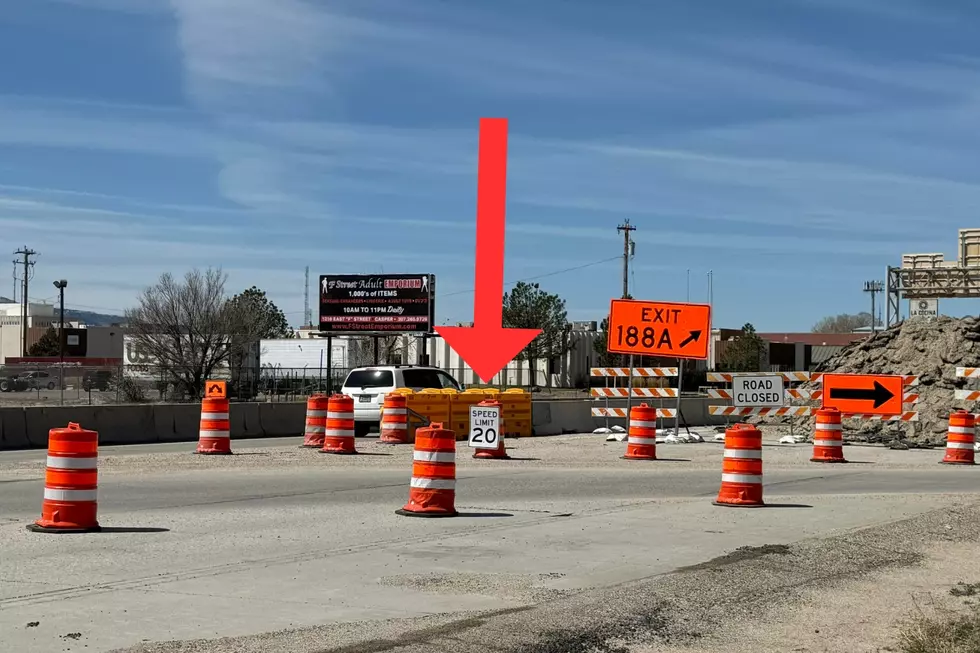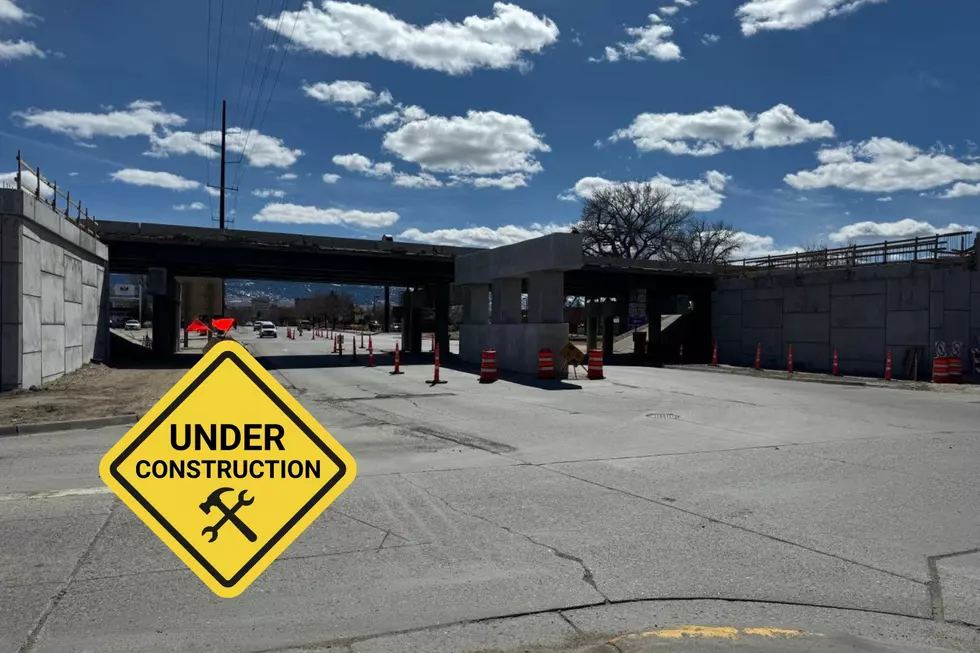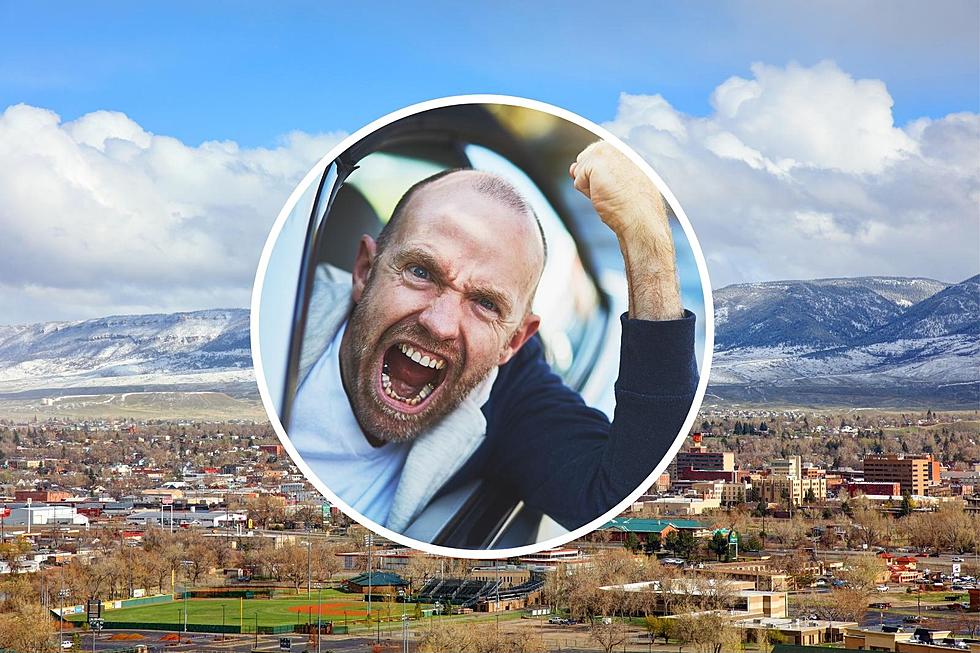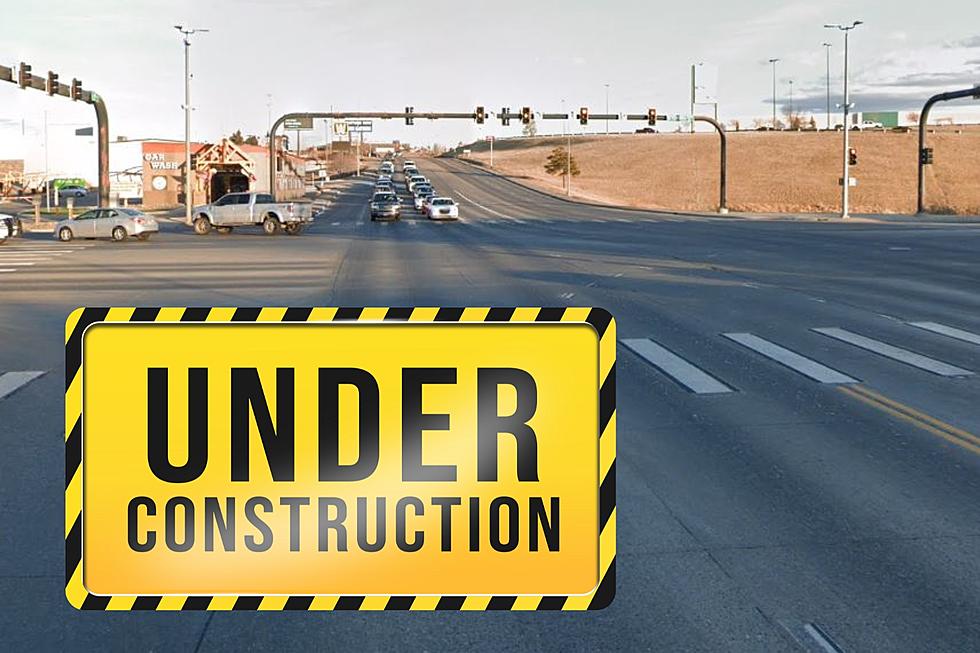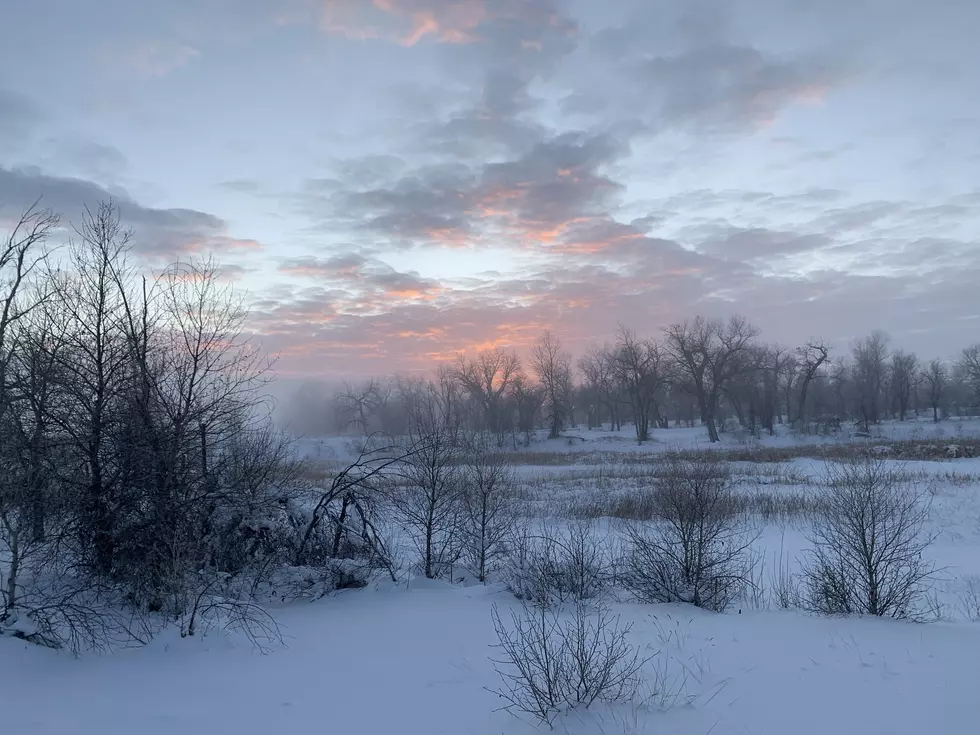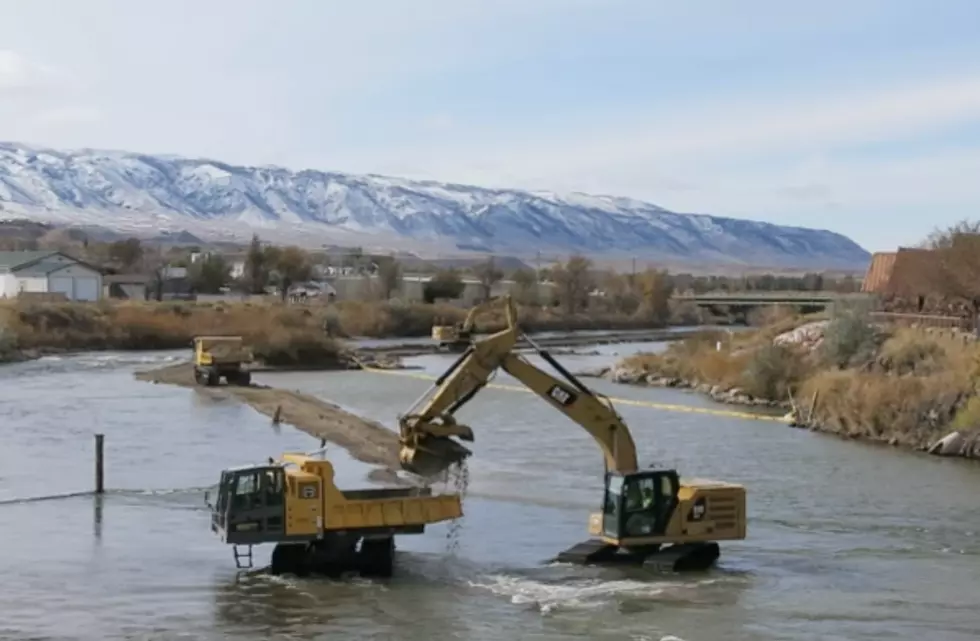
River Rehabilitation Underway in Central Casper
The North Platte River will get narrower before it gets wider -- and healthier -- again in the center of Casper.
In recent weeks, passers-by have seen an operator of an excavator lower the neck to nose down the bucket, open its jaws to take a bite of sopping sand and dirt, lift the silty glop and drop it into a waiting dump truck.
Several buckets-full later, the truck swivels the bed, wades on its tracks to a road in the middle of the river, heads west, and dumps its haul where another excavator awaits to push the dirt to form a cofferdam.
The cofferdam will divert the water to the south side, so the north side can dry enough for crews to begin the work on the next phase of the North Platte River rehabilitation, said Jolene Martinez, an assistant city manager who oversees the project.
"All they've done is build the road and isolate the area where they plan to start construction," she said.
Once construction is completed on both sides, crews will start on another section downstream and finish the project at the BNSF bridge, an approximately half-mile of water that saw heavy industrial use during Casper's history.
"This section of the river is highly contaminated," Martinez said.
The oil boom left a lot of hydrocarbon chemicals in the water and the soil, and the Wyoming Department of Environmental Quality was concerned about that when it issued the permit for the project, she said.
However, the project's primary goal is not to mitigate the contamination, Martinez said. "Our project is to stop the erosion, which will mitigate some of the contaminates; but it's not a final answer."
To stop the erosion on the steep and sloughing banks, construction crews will install "wood toe" or "wood debris toe" structures to make new banks, she said.
"We are going to make a river bank built out that will create a shelf that will stop some of the erosion," Martinez said.
The new banks also will force the water to the middle of the river instead of the sides where the erosion happens, and the river will be slightly narrower.
The banks naturally come back, but the rehabilitation will include some spring planting of a riparian seed mix and probably some trees, Martinez said. "One of the benefits is that it improves habitat, improves fish habitat and the bank habitat."
Similar work was done in Morad Park and along northwest Wyoming Boulevard. "where we actually built out a riverbank," she said.
For 13 years, the city has been rehabilitating the river and its banks. The first two phases have improved habitat for fish and in turn water quality, stabilized the banks, saved water wells, and moved the river by 80 feet near Morad Park, which in turn saved Wyoming Boulevard from being washed out, Martinez has said.
The cost for this phase of the rehabilitation is $2.6 million, and the contamination is a driver of that cost. Some of the funding has come from Optional One-Cent Sales Tax revenues, and some will come from the Wyoming Wildlife & Natural Resource Trust.
This amount does not include work on trails, a boat ramp or other amenities, she said. "It's the very basic river rehabilitation."
More From 104.7 KISS-FM
